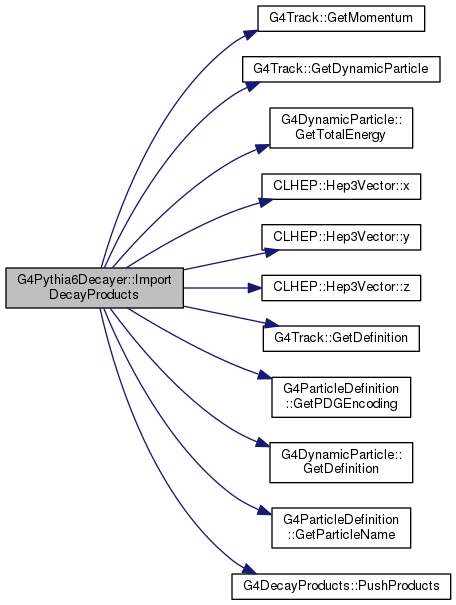|
Geant4
10.03.p02
|
|
Geant4
10.03.p02
|
#include <G4Pythia6Decayer.hh>


Public Member Functions | |
| G4Pythia6Decayer () | |
| virtual | ~G4Pythia6Decayer () |
| virtual G4DecayProducts * | ImportDecayProducts (const G4Track &track) |
| void | ForceDecayType (EDecayType decayType) |
| void | SetVerboseLevel (G4int verboseLevel) |
 Public Member Functions inherited from G4VExtDecayer Public Member Functions inherited from G4VExtDecayer | |
| G4VExtDecayer (const G4String &name="") | |
| virtual | ~G4VExtDecayer () |
| const G4String & | GetName () const |
Additional Inherited Members | |
 Protected Attributes inherited from G4VExtDecayer Protected Attributes inherited from G4VExtDecayer | |
| G4String | decayerName |
Pythia6 decayer
Implements the G4VExtDecayer abstract class using the Pythia6 interface. According to TPythia6Decayer class in Root: http://root.cern.ch/ see http://root.cern.ch/root/License.html
Definition at line 53 of file G4Pythia6Decayer.hh.
| G4Pythia6Decayer::G4Pythia6Decayer | ( | ) |
|
virtual |
Destructor
Definition at line 71 of file G4Pythia6Decayer.cc.
| void G4Pythia6Decayer::ForceDecayType | ( | EDecayType | decayType | ) |
Force a given decay type
Definition at line 617 of file G4Pythia6Decayer.cc.

|
virtual |
Import decay products
Implements G4VExtDecayer.
Definition at line 538 of file G4Pythia6Decayer.cc.
